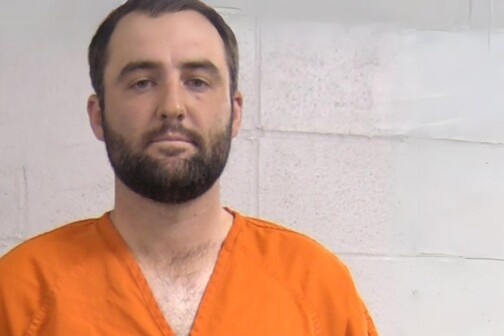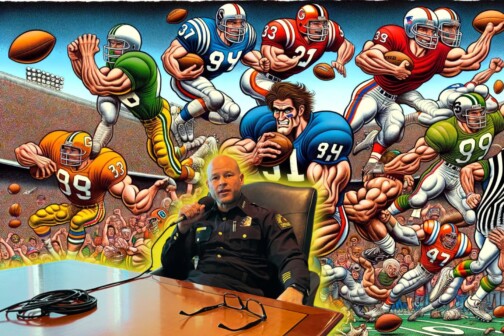A week ago, Mayor Eric Johnson gathered with all of the Important Park People at Pacific Plaza downtown to begin a campaign that will last for at least the next six months. The Dallas Parks Coalition wants $399 million for parks and trails in the 2024 bond election. It’s a noble cause. It’s also a complicated ask, because it would eat up about 35 to 40 percent of the total bond.
The bond will be at least $1 billion, but some estimates push the city’s borrowing power to $1.1 billion. The bond election will go to voters either next May or November. The work began this summer. Boring, important work.
Since June, five subcommittees have been hearing from city staff and other advocates about how much money to recommend in the bond for the various propositions. Those subcommittees represent streets and infrastructure; “critical facilities” like City Hall; parks and trails; flood protection and storm drainage; and economic development and housing.
According to the city, there is presently $16.6 billion in unmet needs across those categories. The bond won’t solve all those problems, but it can help. And it can create new opportunities—and more things to maintain.
I wrote a few weeks back about housing advocates calling for $200 million in bond funding to go toward projects that will keep people in their homes amid rising property taxes and encourage more affordable housing. Here are the other asks:
- Critical facilities appear poised to request as much as $255 million.
- Flood control’s highest ask will likely be $200 million.
- City staff would like to see $615 million for streets and infrastructure.
- Dallas police and fire have pushed for $730 million, which would build new fire stations and rehab old ones; buy new fire trucks; and upgrade the police department’s property room and other aging facilities.
With the park’s $399 million request, that totals more than double what the city will be able to borrow. Even advocates acknowledge the difficulty in splitting the spend.
“All these causes are important. The housing cause is a righteous cause. We’re all looking around and seeing how important each of these issues is,” says Robert Kent, the director of the Texas branch of the Trust for Public Land. “What I do know is that parks are incredibly important and it goes back to that tax base; if we are not investing in our parks right now, this is what drives quality of lives. It’s what drives businesses to relocate to Dallas, and it’s what drives people to move to Dallas.”
Bond programs can pay for exciting things. For instance, the parks folks want $7 million for the Five Mile Creek parks and trail project in southern Oak Cliff, which can also be leveraged toward federal grants that Kent says could generate a four-to-one return. The Trust for Public Land is leading that project, working in tandem with the city. (Mayor Johnson joined Kent and others yesterday to celebrate receiving a nearly $6.5 million federal grant.)
The housing and economic development subcommittee wants $7 million to go toward economic catalyst projects in Pleasant Grove. The International District near the Galleria and Valley View wants money for a park, which its council member hopes will help fuel denser housing and infill developments around it. The housing subcommittee has recommended spending $20 million around what will be the International District, by using bond dollars to leverage private investment in mixed-income, mixed-use developments.
Other recommendations include $90 million for the “rehabilitation/acquisition” of rental housing units, a priority as the city loses what is considered naturally occurring affordable housing. Those are often smaller rental units, like duplexes and quadplexes and small apartment buildings, that are being snapped up and mowed down and replaced with luxury units.
But the core purpose of the bond is to pay to fix broken stuff and maintain our infrastructure. The parks request, for instance, will be broken down into specific projects and improvements. So, yes, an investment into Five Mile Creek, but also playground additions and fixes for concrete trails.
The housing and economic development subcommittee advise spending $80 million on infrastructure improvements in areas that could provide housing units for residents making between 60 to 120 percent of the area median income. (That would be between $37,000 and $74,000 for a single earner and $53,000 to $106,000 for a family of four.)
A rehabilitation program for homeowners could receive $10 million in funding. The City Council will establish priorities for the bond and make difficult cuts. The research nonprofit Child Poverty Action Lab found that Dallas has a shortage of about 33,660 units, which is projected to expand to 83,500 by 2030. CPAL advises the city to develop at least 100,000 in the next 10 years. Can the bond help move the needle? Will there be enough political will to do so?
The thing to watch for in the next year is sustainability: how do you grow the tax base in the future so that the bond isn’t a cure-all? So that newcomers have places to live that they can afford?
That means smart upzoning, which would allow more housing units to be built on less land. It means overhauling our ancient parking requirements, which stifle growth and make it difficult for small businesses to operate. These types of issues will be, in some ways, more difficult than the bond discussions. But they will happen alongside one another.
The central question remains unchanged: what kind of city do we want in the future?
Author






